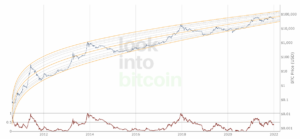Merry Christmas and Happy New Year to each of you!
I hope that each of you has had a fantastic end to 2021, which proved to be yet another interesting and unusual year.
Current Market Conditions
 Inflation appears to have peaked in the fourth quarter of 2021 and is likely to decelerate year-over-year, yet remain relatively high for the first half of 2022.
Inflation appears to have peaked in the fourth quarter of 2021 and is likely to decelerate year-over-year, yet remain relatively high for the first half of 2022.
Real economic growth, or gross domestic product (GDP), has also slowed and may mildly decelerate year-over-year into 1Q 2022.
“Stagflation” is likely to be the overarching reality of the 2020s, which means generally stagnant economic growth mixed with persistently high levels of inflation. Quality of life for individuals and families tends to decline during stagflationary periods, which is unfortunate.
Certain asset classes do well in such conditions, while others perform relatively poorly. Companies that are able to grow their revenues and profits with relatively little additional capital expenditures often outperform other equities in stagflationary conditions. Commodities, generally thought of as an alternative asset, can also provide nice portfolio returns.
The 2010 decade of outperformance of growth stocks, with their high revenue growth and even higher price-to-sales ratios, may be coming to end. A shift to quality equities from overhyped growth stocks with historically stretched valuations is in order.
The price of bitcoin (pictured above) should continue its relentless and volatile ascent in the coming years, although it historically underperforms when both GDP and inflation are decelerating year-over-year.
Strategies for Vailshire’s Separately Managed Accounts
The end of any year is a great time to reflect on what worked well and what did not for Vailshire client portfolios. I have spent recent weeks studying the incoming data and tweaking our investment strategy for the coming quarters and years.
One major change will be a sizable shift to high-quality, capital efficient stocks. These are companies that consistently find ways to successfully navigate difficult economic and inflationary conditions. Even when times are tough, such businesses continue to attract customers and are able to maintain–or even increase–their profit margins while inflation worsens. These stocks will provide an anchor to our Vailshire portfolios through tumultuous times, as well as periods of relative calm. For this group of stocks, I am targeting a compounded annual growth rate (CAGR) of 20-30% over the next five years.
A second material change is with Bitcoin. Though the price action remains quite volatile, user adoption and network growth are growing exponentially. As Bitcoin evolves in the coming years from the Early Adopter to the Early Majority phase, its price should continue to grow in an exponential channel (pictured above). The sizing of our bitcoin positions will not be haphazard. Rather, they will be based upon a quantitative valuation model. That is, the cheaper bitcoin is, the larger our position sizes will be… and vice versa. As for bitcoin’s price, I have a 75-80% CAGR targeted over the ensuing five years.
In addition to our new dynamic bitcoin position sizing strategy, we will also change the way we “own” bitcoin within our portfolios. To date, our primary method has been via Grayscale’s closed end fund (GBTC). Given recent issues with GBTC and our Interactive Brokers trading platform, I am happy to announce that we will primarily use MicroStrategy (MSTR) as our favored bitcoin proxy going forward. The market capitalization of MicroStrategy is nearly equal to the enormous amount of bitcoin holdings on its balance sheet. MSTR will serve as a mildly leveraged way to own bitcoin going forward, and we get to own a decent cash-gushing software company (its core business) to boot. Holding MSTR is like owning a bitcoin ETF without any fund fees… a good deal!
Our Grayscale Ethereum Trust fund (ETHE) will also be removed. Should optimistic conditions return for the bitcoin infrastructure and crypto world in the future, we will find compatible exchange-traded funds, such as BLOK, to own for outsized profits.
*Related: All Vailshire Capital Management clients recently received an email from me, forwarded from Interactive Brokers, stating that you need to adjust your account settings in order to hold “complex or leveraged exchanged traded products.” Given our above-mentioned switch from Grayscale’s closed-end funds to other bitcoin and related proxies, you no longer need to follow the previously emailed instructions.
We will continue to add and remove other investments based on the same full-cycle systematic investment approach that we have been using for the past few years. As underlying market conditions become more or less favorable, so too will change the aggressive/conservative tilt of our portfolios.
Depending on your financial objectives and individual account investment privileges, Vailshire’s separately managed accounts are currently allocated in the following manner:
- 50-60% select capital efficient equities
- 5% cash
- 15-30% bitcoin, Bitcoin infrastructure, and related digital assets
- 10-15% housing and real estate equities
- 5% technology equities
If you are a Vailshire Client, feel free to log into your Vailshire-managed account(s) at Interactive Brokers and see how your own portfolios are positioned. (It’s a good idea to log into your accounts at least quarterly, just to make sure your settings and demographics are up to date.)
Conclusion
Many changes are afoot, both in the world economy and within our Vailshire investment portfolios. A wise person changes his or her outlook as the underlying data changes.
Given the expected stagflationary and, possibly, tumultuous times ahead, we are steadily increasing the anti-fragile composition of our portfolios, as described above in detail. Armed with relevant financial data, we can face an uncertain future with confidence and optimism.
I am highly enthusiastic about our positioning for 2022 and beyond. I hope you are, as well!
Living well and investing wisely with you,
Jeff Ross, MD, MBA

